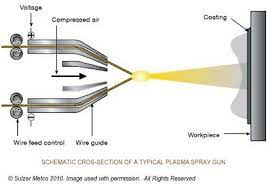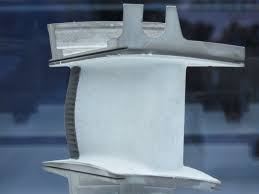The plasma coating process is a way of applying different metal coatings or ceramic/cermet onto specific surfaces or equipment. It is used across numerous industries, including automotive, medical equipment/device manufacturing, and microelectronics.
Plasma coating enables changes to be made to the key properties of a component. An example of this would be an aluminium roll being coated in tungsten carbide in order to increase its hardness. The key performance properties of plasma coated materials include: chemical and thermal resistance, flame resistance, optimum permeation resistance, high purity, and resistance to abrasion.
Ways in which coatings can be applied
There are four different ways in which plasma coatings can be applied: thermal spray application, plasma application, arc spray application, and HVOF application.
Thermal spraying
Thermal spraying melts the coating material using the combustion of gas with oxygen and then propels it onto the surface to form. Thermal applications enable polymers to impregnate the coating. Tungsten Carbide, Chrome Oxide, or Aluminium can be applied in this way.
Plasma application
This method uses inert gas charged with electricity. This causes an arc flame which burns at temperatures in excess of 150,000°c. Metallic/ceramic powder is then injected into the flame and sprayed onto the desired surface. This forms a dense, corrosion resistant, and abrasion resistant finish.
Market size
Expert firms
There are a number of companies with websites outlining the thermal plasma spray treatments they can provide, such as the example seen here: https://www.poeton.co.uk/advanced-treatments/apticote-800-thermal-plasma-spray/.

Arc Spray
The arc spray process uses two metallic wires with opposing polarity, which are electrically charged and forced together. This causes the wire to get hot and melt. The molten material is then atomised and sprayed onto the surface. A variety of roughnesses and thicknesses can be achieved with this method by altering the amps used and wire feed speed.

High Velocity Oxy Fuel (HVOF)
The HVOF process involves mixing gas and oxygen and then igniting it inside a specialist combustion chamber. This produces a high-pressure gas stream. This is then used to transfer the powders (metallic or ceramic) at supersonic speed, melting the materials and making them hit the surface at immense velocity. This method produces a finish that can be ground and polished to a high specification.
